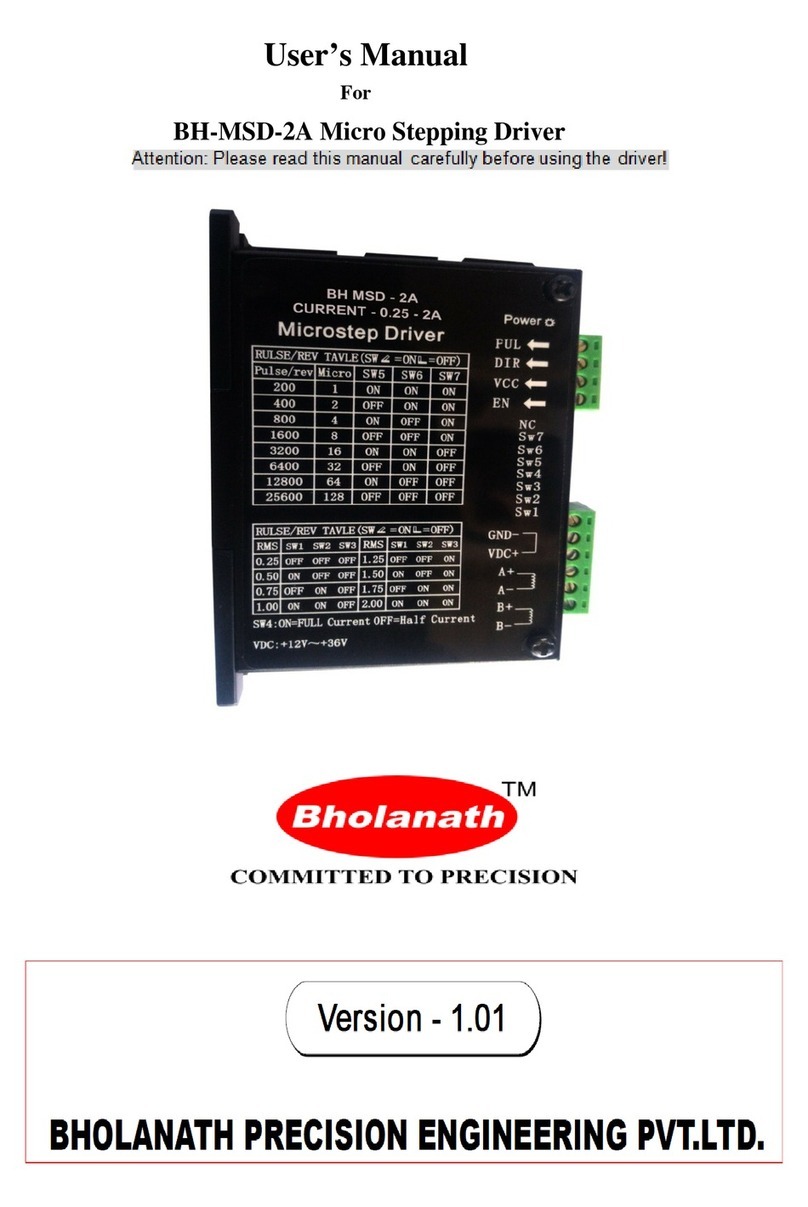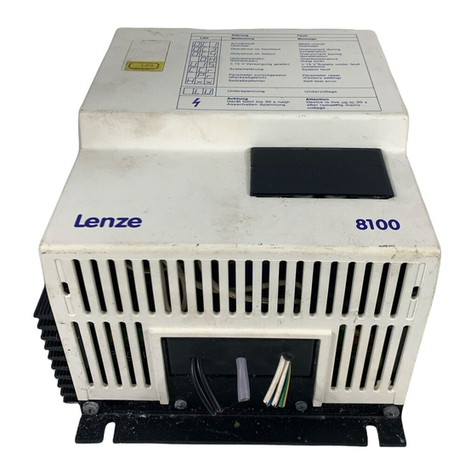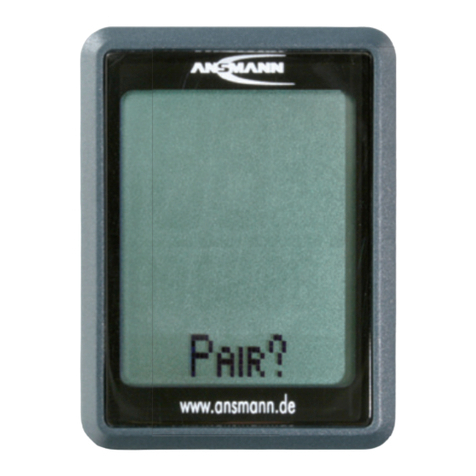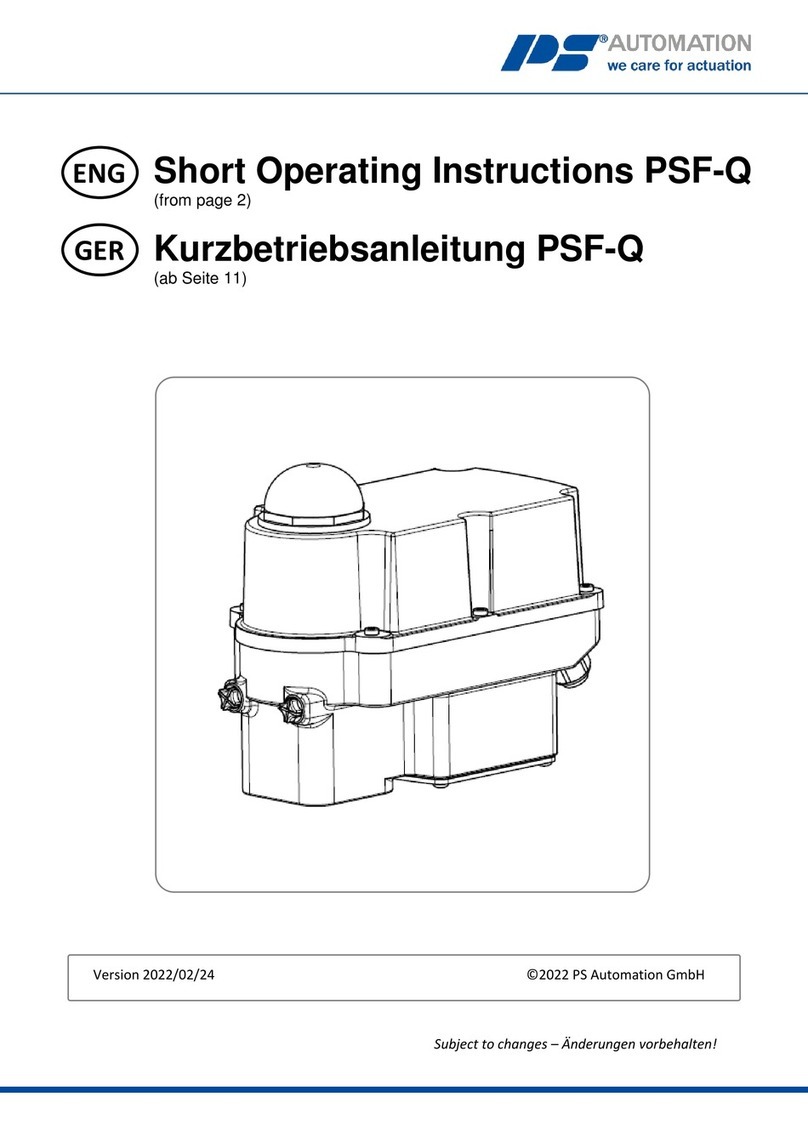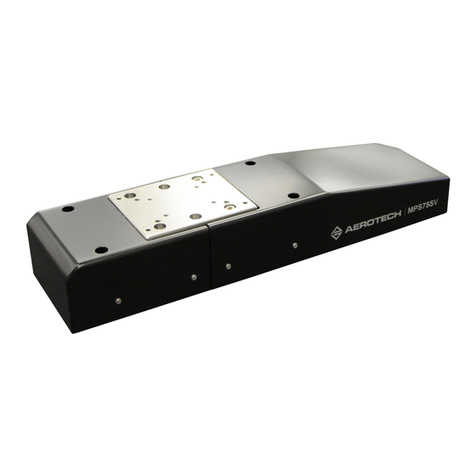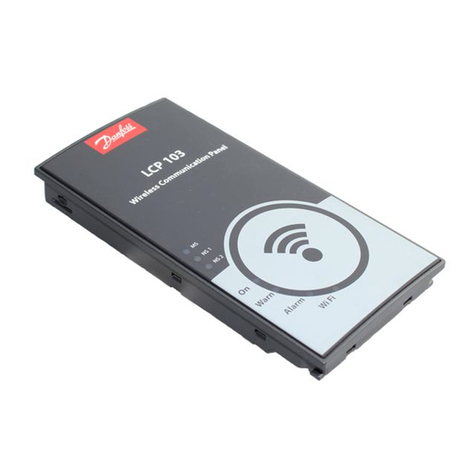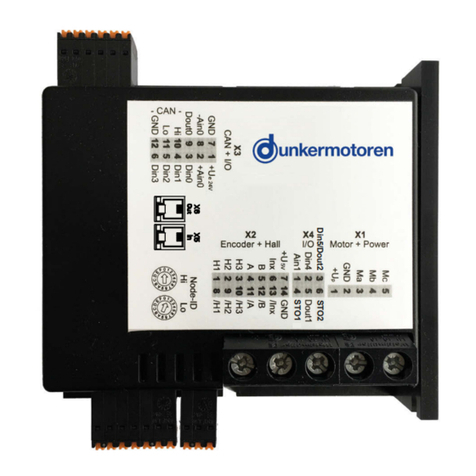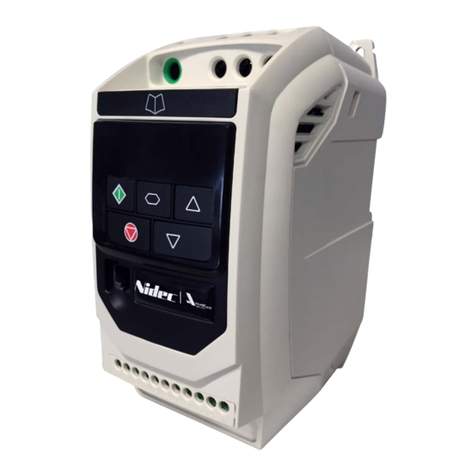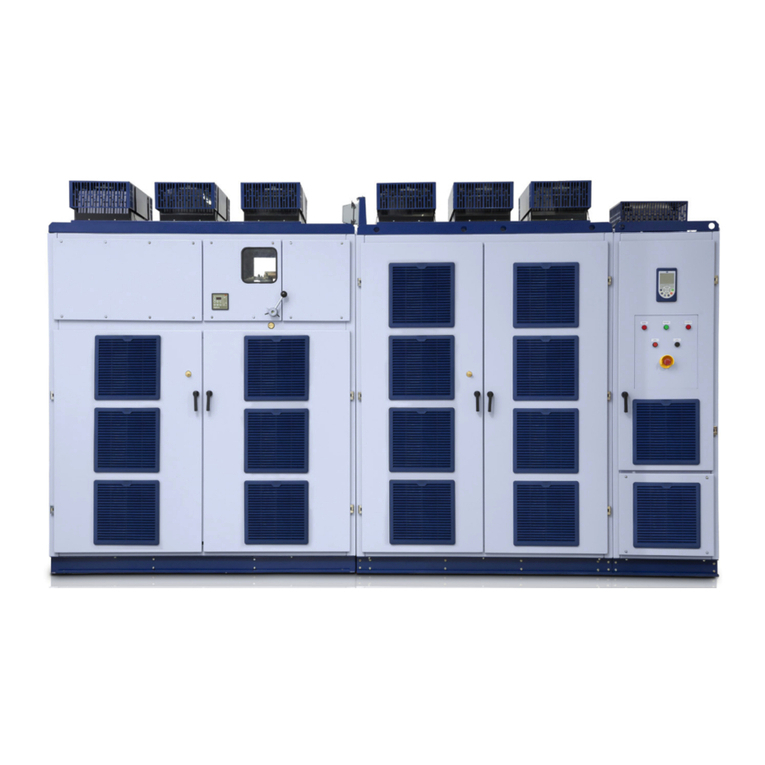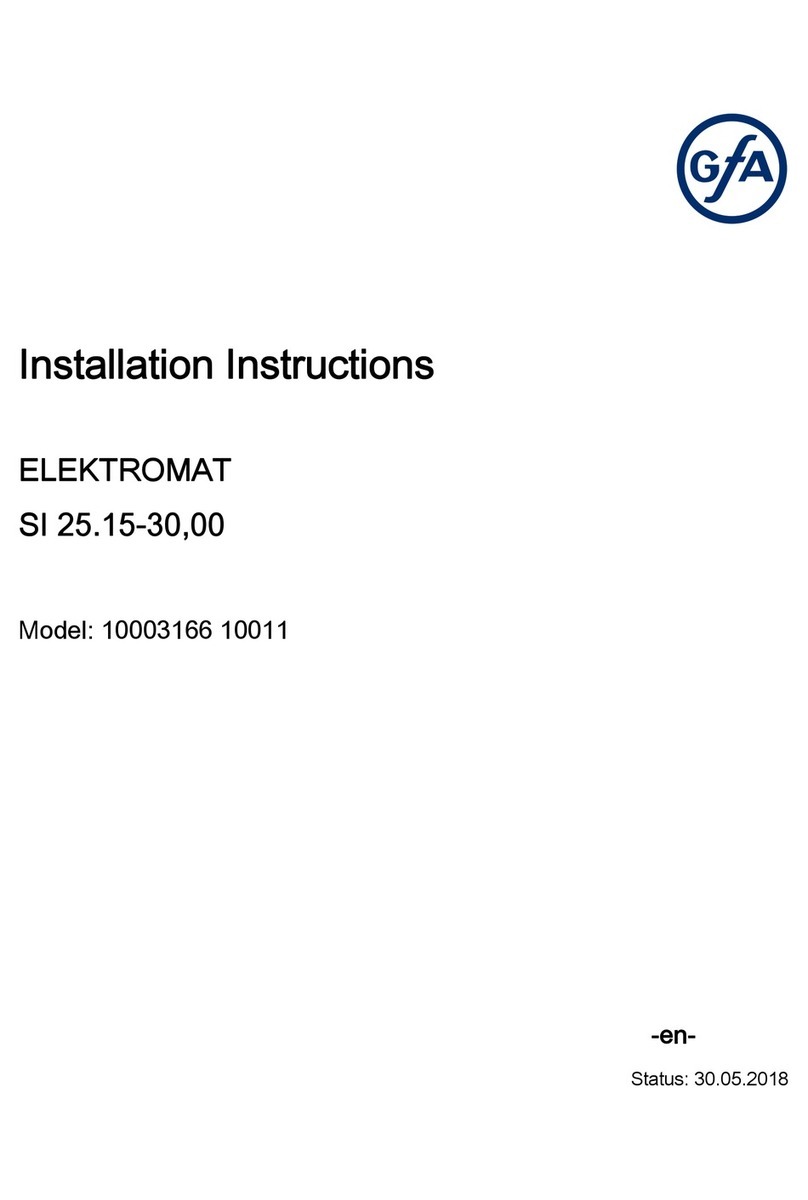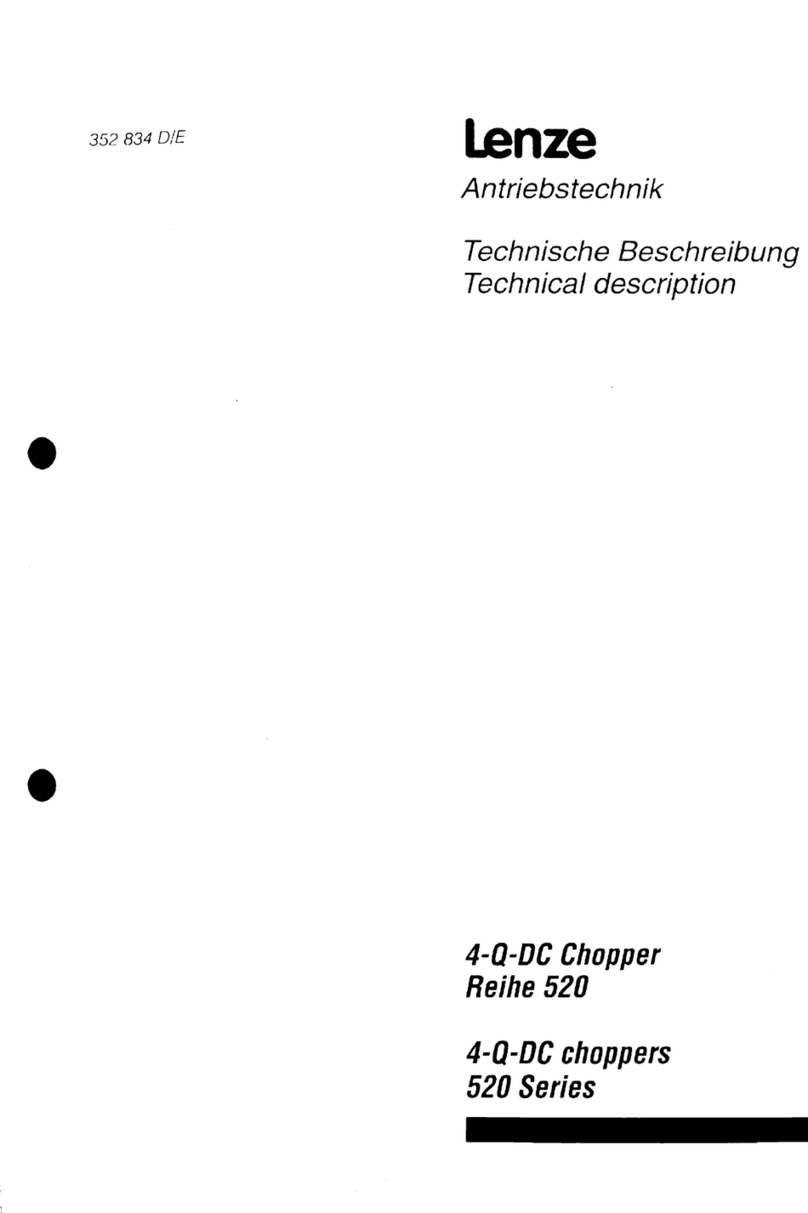Bholanath BH-SMART-2A User manual

Website:-www.bholanath.in
E-mail id:-support@bholanath.in
1
User’s Manual
For
BH-SMART-2A Micro Stepping Driver

Website:-www.bholanath.in
E-mail id:-support@bholanath.in
2
Product Number Code For Micro step drive
BH SMART MODBUS 2A
2 Amp
DRIVE HAVING MODBUS INTERFACE(RS-485)
DRIVE HAVING INBUILT RPM & DIRECTION CONTROL BY
ROTARY SWITCH WITH ON OFF SWITCH
BHOLANATH
1. DC power input : 10VDC ~ 45VDC
2. Output current: 0.25A-2A
3. Micro stepping: 200, 400, 800, 1600,3200
4. Protect rom:overheat, lock automatic half current, error connect protect
5. Dimension: 97mmx64mmx31mm
6. Weight:150g.
7. Working environment: Temperature: -15⁰C ~+45⁰C

Website:-www.bholanath.in
E-mail id:-support@bholanath.in
3
Table of Contents
1. Introduction, Features and Applications............................................................4
Introduction...............................................................................................4
Features.................................................................................................... 4
Applications..............................................................................................4
2. Specifications................................................................................................4
Electrical Specifications..............................................................................4
Model no:-BH-SMART-2A.................................................................4
Drive prevention........................................................................................ 4
Operating Environment...............................................................................4
Elimination of Heat.................................................................................... 5
3. Pin Assignment and Description......................................................................5
Connector P1 Configurations.......................................................................5
Connector P2 Configurations.......................................................................5
External Limiting Resistance.................................................................................. 5
Rpm & Direction Control by Rotary Wheel & Switch...........................................5
Wiring Notes........................................................................................................... 6
Switch Choices....................................................................................................... 6
4. Sequence Chart Of Control Signals…………………………………………………….6
5. Calculation of pulse frequency………………………………………………………7
Frequency With Different RPM At 400 Micro Step............................................ 7
Frequency With Different RPM At 800 Micro Step............................................ 7
6. Connecting the Motor.................................................................................... 7
Connections to 4-lead Motors...................................................................... 7
Connections to 6-lead Motors...................................................................... 8
Half Coil & Full Coil Configurations ...........................................................8
Connections to 8-lead Motors...................................................................... 9
Series & Parallel Connections.....................................................................9
7. Power Supply Selection..................................................................................9
Regulated or Unregulated Power Supply....................................................... 9
Multiple Drivers........................................................................................ 9
8. Troubleshooting........................................................................................... 9
9. Dimensions................................................................................................ .11
10. FAULT OUTPUT Connection……..…………………………………………………12
11. Circuit connections Of BH SMART -2A With BH SDC-01,02..................... .12
12. Circuit connections of BH SMART-2A With Arduino & PLC..........................13

Website:-www.bholanath.in
E-mail id:-support@bholanath.in
4
MODBUS
13. ODBUS Communications:………………………………………………………………………… 16
odbus Protocol Overview:……………………………………………………………………….16
Read Parameter:…………………………………………………………………………………………16
Write Parameter (Single Register):……………………………………………………………..16
Write Parameter ( ultiple Register):………………………………………………………….17
Read Single Bit Parameter (Coil):…………………………………………………………………17
Write Single Bit Parameter (Relay):……………………………………………………………..17
14. Single Register Parameters:…………………………………………………………………………..18
CONNECT/DISCONNECT CO AND :……………………………………………………………..19
SLAVE ADDRESS:……………………………………………………………………………………………..19
ICROSTEP……………………………………………………………………………………………………..20
PITCH………………………………………………………………………………………………………………21
CURRENT…………………………………………………………………………………………………………21
ACC:………………………………………………………………………………………………………………..22
DCC:………………………………………………………………………………………………………………..23
BAUDRATE:……………………………………………………………………………………………………..23
15. Single register Commands:…………………………………………………………………………….24
SET_HO E_POSITION:…………………………………………………………………………………….24
START: Start…………………………………………………………………………………………………….24
HOLD: Hold……………………………………………………………………………………………………..25
RELEASE: Release……………………………………………………………………………………………25
SET_DEFAULT_CODE:……………………………………………………………………………………..25
16. ultiple register Write (commands):…………………………………………………………….26
RUN:……………………………………………………………………………………………………………….27
OVE:…………………………………………………………………………………………………………….28
GO_HO E:……………………………………………………………………………………………………..29
17. Auto cycle programming:……………………………………………………………………………….30
AUTO_CYCLE:…………………………………………………………………………………………………..32
18.Frequently Asked Question…………………………………………………….37

Website:-www.bholanath.in
E-mail id:-support@bholanath.in
5
1. Introduction, Features and Applications
Introduction
Micro stepping driver is particularly suitable for the applications desired with extremely low noise and low
temperature rise technology which significantly improve the performance of the stepper motor that leads to
low temperature rise, low vibration. With the adjustment technology (step/rev and current) according to
different motors, the driven motors automatically generate optimal parameters for different motors, and
achieve the best performance at higher speed. It is suitable for driving 2-phase and 4-phase hybrid stepping
motors.
Features
High performance, cost-effective
Suitable for 2-phase and 4-phase motors
Support PUL/DIR , CW/CCW modes and RPM control rotary wheel.
Short-voltage, over-voltage, over-current and short-circuit protection
Low temperature rise, smooth motion
Pulses Response Frequency Can Reach 200KHz
Support NPN Pulse & direction input only.
Applications
Suitable for a wide range of stepping motors, for NEMA size 17. It can be used in various kinds of machines,
such as X-Y tables. And a variety of large-scale automation equipments and instruments. For example:
labeling machine, cutting machine, packaging machine, plotter, engraving machine, CNC machine tools and
so on. It always performs well when applied for equipment which requires for low-vibration, low-noise,
high-precision and high-velocity.
2. Specifications
Electrical Specifications
Model No:-BH-SMART-MODBUS-2A
Parameter
in
Typical
ax
Unit
Input
Voltage(DC)
10
-
45
VDC
Output current 0.25 - 2
A
DRIVE PREVENTION :-
NOTE:-Please ensure maximum voltage should not exeed 45 VDC to prevent damaged to the driver.
Operating Environment
Cooling Natural cooling or Forced cooling
Operating Environment Environment-Avoid dust, oil fog, corrosive gases
Temperature- -15℃
℃℃
℃-
--
-+45℃
℃℃
℃
Humidity-Not Condensation, No Water Droplets
Operating Temperature- -10℃
℃℃
℃-
--
- +
++
+45℃
℃℃
℃
Storage Temperature -15℃
℃℃
℃-
--
-+45℃
℃℃
℃
Elimination of Heat
Driver’s reliable working temperature should be <65
℃
℃℃
℃
, and motor working temperature should be
<80
℃
℃℃
℃
;
It is recommended to mount the driver vertically to maximize heat sink area. Use forced cooling
method to cool the system if necessary.

Website:-www.bholanath.in
E-mail id:-support@bholanath.in
6
3. Pin Assignment and Description
The driver has two connectors namely P1 & P2, Connector P1 for control signals connection, Connector P2
for power and motor connections. The following tables are brief descriptions of the two connectors.
Connector P1 Configurations
Pin
Function
Details
PUL
PULSE
SIGNAL
NEGATIVE
DIR
DIRECTION
SIGNAL
NEGATIVE
ENA
ENABLE
SIGNAL
NEGATIVE
FAULT
+
FAULT
SIGNAL
POSITIVE
SUPPLY(EXTERNAL)
FAULT - FAULT SIGNAL STATUS OUTPUT(EMMITER FOLLOWER)
Connector P2 Configurations
Pin
Function
Details
V+
DC
POWER
SUPPLY/AC
POWER
SUPPLY
GND
GROUND
A+,A-
MOTOR
PHASE
A
B+,B- MOTOR PHASE B
Modbus Terminal
Pin Function Details
A
MODBUS
TERMINAL
–
A
OR
(D+)
B MODBUS TERMINAL – B OR (D-)
EXTERNAL CURRENT LIMITING RESISTANCE: Signal current in both the“+” “-”ports, can’t be
too big and not too weak. It is necessary to connect current-limiting resistor in external, refer to following
table
VOLTAGE
LIMITING
RESISTANCE(R
)
5
V
R=0
12
V
R=1K
Ω
(0.25W)
24 V R=2.2 KΩ(0.25W)
RPM & DIRECTION Control by Rotary Wheel and Switch
1. Clockwise and Anticlockwise movement of Rotary wheel will give Clockwise and
Anticlockwise motion of motor.
2. To increase speed continue to rotate the wheel in same direction.
3. Once desired speed is achieved press the switch once to record the data,the motor will stop.
4. Now you can use the switch for ON-OFF as per requirement and the saved data will be used
to rotate the motor.
5. Long press of 5 Sec or more will erase old data.
6. Repeat steps 1 to 4 for saving new data.
Wiring Notes
To prevent noise incurred in PUL/DIR signal, pulse/direction signal wires and motor wires should
not be tied up together. It is better to separate them by at least 10 cm, otherwise the disturbing signals
generated by motor will easily disturb pulse direction signals, causing motor position error, system
instability and other failures.
If a power supply serves several drivers, separately connecting the drivers is recommended instead of
daisy-chaining.
It is prohibited to pull and plug connector P2 while the driver is powered ON, because there is high
current flowing through motor coils (even when motor is at standstill). Pulling or plugging connector
P2 with power on will cause extremely high back-EMF voltage surge, which may damage the driver.

Website:-www.bholanath.in
E-mail id:-support@bholanath.in
7
Switch Choice:
1.Microstepping choice:
SW 6 off on off on on
SW 7 off off on on on
SW 8 off off off off on
Micro 200 400 800 1600 3200
2.Current choice
:
::
:
SW 1 off on off on off on off on off on off on off
SW 2 off off on on off off on on off off on on off
SW 3 off off off off on on on on off off off off on
SW 4 off off off off off off off off on on on on on
Current
(A)
0.25 0.4 0.5 0.6 0.75 0.85 1 1.2 1.33 1.5 1.7 1.8 2
Note:-Any DIP Switch Setting other than above
Current:-The 0.25 A current will be set.
Microstep:-3200 microstep will be set.
4.Sequence Chart of Control Signals
In order to avoid some fault operations and deviations, PUL, DIR and ENA should abide by some
rules, shown as following diagram:
NOTE: Enable signal is always high in this drive. Any external supply of 5 Vdc applied will disable the
Drive.
Remark:
a) t1 :ENA must be ahead of DIR by at least 5uS. ENA signal is necessary to be driven High in case
Direction is needed to be changed.
Sequence for changing the direction as follows:-
1) User must drive ENA signal high,wait for 5µs
2) Change DIR signal as per need,wait for 5µs
3) Drive ENA signal low
b) t2: DIR must be ahead of PUL effective edge by 5µs to ensure correct direction;
c) t3: Pulse width not less than 1.5µs;
d) t4: Low level width not less than 1.5µs.

Website:-www.bholanath.in
E-mail id:-support@bholanath.in
8
5.CALCULATION OF PULSE FREQUENCY: F = (RPM X MICRO STEP)/60
If Need 60 RPM at 400 Micro Step (Half Step, Default Setting)
Then Frequency = (60X400) /60
= 400Hz
TABLE : (a)Frequency With Different RPM At 400 Micro Step
RPM 60 120 180 240 300 360 420 480 540
FREQUENCY(Hz) 400 800 1200 1600 2000 2400 2800 3200 3600
TABLE : (b) Frequency With Different RPM At 800 Micro Step
If Need 60 RPM at 800 Micro step
Then Frequency = (60X800) /60
= 800Hz
RPM 60 120 180 240 300 360 420 480 540
FREQUENCY(Hz) 800 1600 2400 3200 4000 4800 5600 6400 7200
6. Connecting the Motor
Connections to 4-lead Motors
4 lead motors are the least flexible but easiest to wire. Speed and torque will depend on winding inductance.
Connections to 6-lead Motors
Like 8 lead stepping motors, 6 lead motors have two configurations available for high speed or high torque
operation. The higher speed configuration, or half coil, is so described because it uses one half of the motor’s
inductor windings. The higher torque configuration, or full coil, uses the full windings of the phases.
Half Coil Configurations
As previously stated, the half coil configuration uses 50% of the motor phase windings. This gives lower
inductance, hence, lower torque output. Like the parallel connection of 8 lead motor, the torque output will
be more stable at higher speeds. This configuration is also referred to as half chopper.
6-lead motor half coil (higher speed) connections
FOR
HALF
COIL
CONNECTION
CONNECT (A+)-A Com & (B+)-B Com/
A
Com-(A-)
&
B
Com-(B-)

Website:-www.bholanath.in
E-mail id:-support@bholanath.in
9
Full Coil Configurations
Lower speeds is desired. This configuration is also referred to as full chopper. In full coil mode, the
motors should be run at only 70% of their rated current to prevent overheating.
6-lead motor full coil (higher torque) connections
NOTE:THE ABOVE CONFIGURATIONS IS FOR CONNECTING IN A BIPOLAR MICROSTEP
DRIVE AS PER APPLICATION/NON-AVAILABILITY OF A UNIPOLAR MICROSTEP DRIVE.
Connections to 8-lead Motors
8 lead motors offer a high degree of flexibility to the system designer in that they may be connected in series
or parallel, thus satisfying a wide range of applications.
Series Connections
A series motor configuration would typically be used in applications where a higher torque at lower speeds
is required. Because this configuration has the most inductance, the performance will start to degrade at
higher speeds. In series mode, the motors should also be run at only 70% of their rated current to prevent
overheating.
8-lead motor series connections
Parallel Connections
An 8 lead motor in a parallel configuration offers a more stable, but lower torque at lower speeds. But
because of the lower inductance, there will be higher torque at higher speeds.
8-lead motor parallel connections
7. Power Supply Selection
The Microstep Driver can match Large and small size stepping motors (from Nema size 17 to Nema size 34).
To achieve good driving performances, it is important to select supply voltage and output current properly.
Supply voltage determines the high speed performance of the motor, while output current determines the
output torque of the driven motor (particularly at lower speed). Higher supply voltage will allow higher
motor speed to be achieved, at the price of more noise and heating. If the motion speed requirement is low,
it’s better to use lower supply voltage to decrease noise, heating and improve reliability.
FOR
FULL
COIL
CONNECTION
CONNECT (A+)-(A-) & (B+)-(B-)/
LEAVE A Com & B Com

Website:-www.bholanath.in
E-mail id:-support@bholanath.in
10
SMPS or Linear Power Supply
Both SMPS and Linear power supplies can be used to supply the driver. However, Linear power supplies are
preferred due to their ability to withstand current surge. If SMPS power supplies (such as most switching
supplies.) are indeed used, it is important to have large current output rating to avoid problems like current
clamp. On the other hand, if Linear supply is used, one may use a power supply of lower current rating than
that of motor (typically 50%
~
~~
~
70% of motor current). The reason is that the driver draws current from the
power supply capacitor of the Linear supply only during the ON duration, but not during the OFF duration.
Therefore, the average current withdrawn from power supply is considerably less than motor current
Multiple Drivers
It is recommended to have multiple drivers to share one power supply to reduce cost, if the supply has
enough capacity. To avoid cross interference, DO NOT daisy-chain the power supply input pins of the
drivers. (Instead, please connect them to power supply separately).
8. Troubleshooting
a. The status on light’s indication
RUN: green, normal work light.
ERROR: red, failure light, the motor with phase short-circuit, overvoltage and undervoltage protection.
NOTE:
TO CHECK IF DRIVE IS OK/NOT OK, CONNECT ONLY SUPPLY (AC /DC) VOLTAGE AND
GROUND TO THE MICROSTEP DRIVE AND CHECK THE LED INDICATOR IF IT SHOWS GREEN
THEN DRIVE IS OK AND IF THE LED INDICATOR SHOWS RED THEN DRIVE IS NOT OK. THIS
TEST SHOULD BE DONE WHEN THE BELOW TROUBLE SHOOTING IS CARRIED AND MOTOR
IS NOT RUNNING.

Website:-www.bholanath.in
E-mail id:-support@bholanath.in
11
2. Troubleshooting
Problems
Possible cause
Solutions
No
power
supply
Check
the
power
supply
Motor is not
No
control
signal
Check
the
control
signal
rotating
The
driver
is
disabled
Don
’
t
connected
the
enable
signal
or
enable
the
driver
Supply
voltage
is
too
high
or
Check
the
supply
voltage
too
low
Red LED light
Motor
line
short-circuit
Check
motor
lines
eliminate
the
short-circuit
Motor
line
wrong
connect
Check
the
motor
wiring
Motor
or
drive
failure
Replace
the
motor
or
drive
Motor rotates in
Motor
phases
connected
in
Reverse
the
phases
line
the wrong
reverse
direction
Wrong I/p direction signal
Change
direction
setting
Motor
line
break
Change
the
phases
are
connected
Inaccurate
The
Micro
steps
set
incorrectly.
Set
the
correct
segments
The
motor
load
is
too
heavy.
Increasing
the
current
Position
Control
signal
is
interfered
Eliminate
interference
Power
supply
voltage
too
low
Increasing
the
supply
voltage
Motor Stalled
Accelerating
time
is
too
short.
Extend
the
acceleration
time
Current
setting
is
too
small
Increasing
the
current
Motor
torque
is
too
small
Replace
the
motor

Website:-www.bholanath.in
E-mail id:-support@bholanath.in
12
Problems Possible cause Solutions
Wrong
connection
for
power
Check
wiring
of
power
LED
off
turn
Low-voltages
for
power
Enlarge
voltage
of
power
Wrong
connection
of
stepper
Correct
its
wiring
Motor
doesn
’
t
run,
motor
without
holding
torque
RESET
signal
is
effective
when
offline
Make
RESET
ineffective
Motor
doesn
’
t
run,
but
Without
input
pulse
signal
Adjust
PMW
&
signal
level
maintains
holding
torque
Too
small
relative
to
current
Correct
rated
current
setting
setting
Motor
’
s
holding
torque
is
Acceleration
is
too
fast
Reduce
the
acceleration
too
small
Motor
stalls
Rule
out
mechanical
failure
Driver
does
not
match
with
Change
a
suitable
driver
The motor
9. Dimensions

Website:-www.bholanath.in
E-mail id:-support@bholanath.in
13
10.FAULT OUTPUT Connection
OR
11. Circuit connections Of BH SMART 2A With BH-SDC 01,SDC 02
FAULT+
FAULT-
+V
GND
FAULT
O/P
STATUS
O/P
FAULT+
FAULT-
GND
+V
FAULT
O/P
STATUS
O/P
R
R
NOTE: Maximum Current through
the Fault Switch Is 10 mAmp
Up to 12V no external resister
required
BH-SMART
BH-SMART

Website:-www.bholanath.in
E-mail id:-support@bholanath.in
14
12. Circuit Connections Of BH SMART 2A With PLC

Website:-www.bholanath.in
E-mail id:-support@bholanath.in
15
This is a Tentative connection Guideline for driving the Drive from Any 5V
Controller Systems.

Website:-www.bholanath.in
E-mail id:-support@bholanath.in
16
MODBUS Communications:
13.Modbus Protocol Overview:
Stepper otor Drive Configuration And Control can also be done from remote location via ODBUS
communication. Following sub-sections describe the ODBUS function codes used and, addresses for
each parameter for display and configuration.
The Configured parameters can only be read from the PC application using function code 0x03, and
modified using function code 0x06 for single 16 bit register value and for odify/Write more than one
register ultiple register value using function code 0x10 .
When otor drive run in Auto cycle ode Input relays are used to control cycle start stop these are
single bit values. So that to modify switch status function code 0x05. For each cycle state (start at and
stop at) output coils status is read by using function code 0x01.
Read Parameter:
Function Code 0x03(Read Holding Registers)
Request
Response
*N = Quantity of Registers
Error
For configuration parameters exception code 03 indicate that the data send is out of the boundary
limit.
Write Parameter (Sin le Re ister):
Function Code 0x06(Write Holding Registers)
Request

Website:-www.bholanath.in
E-mail id:-support@bholanath.in
17
Response
Error
Error code 1 Byte 0x86
Exception code 1 Byte 01 or 02 or 03 or 04
For configuration parameters exception code 03 indicate that the data send is out of the boundary
limit.
Write Parameter (Multiple Re ister):
Function Code 0x10 (Write Holding Registers)
Request
Here is an example of a request to write two registers starting at 2 to 00 0A and 01 02 hex:
Read Sin le Bit Parameter (Coil):
Function Code 0x01
Request
Function code 1 Byte 0x01
Starting
Address
2
Bytes
0x0000
to
0xFFFF
Quantity
of
Coils
2
Bytes
1
to
2000
(0x7D0)
Response
Function
code
1
Byte
0x01
Byte
count
1
Byte
2
x
N
*
Coil
Status
n Byte
n
=
N
or
N+1
*
N
=
Quantity
of
Outputs
/
8,
if
the
remainder
is
different
of
0
=>
N
=
N+1
Error
Error
code
1
Byte
Function code + 0x80
Exception
code
1
Byte
01
or
02
or
03
or
04
Function code 1 Byte 0x06
Starting
Address
2
Bytes
0x0000
to
0xFFFF
Register Value (Data) 2 Bytes 0x0000 to 0xFFFF
Function code 1 Byte 0x10
Starting
Address
2
Bytes
0x0000
to
0xFFFF
Quantity
of
Registers
2
Bytes
0x0001
to
0x007B
Byte Count 1 Byte 2 x N*
Registers
Value
N* x 2 Bytes
Data
*
N
=
Quantity
of
Registers
Response
Function
code
1
Byte
0x10
Starting
Address
2
Bytes
0x0000
to
0xFFFF
Quantity
of
Registers
2
Bytes
1
to
123
(0x7B)
Error
Error
code
1
Byte
0x90
Exception code 1 Byte 01 or 02 or 03 or 04

Website:-www.bholanath.in
E-mail id:-support@bholanath.in
18
Write Sin le Bit Parameter (Relay):
Function Code 0x05
Request
Function
code
1
Byte
0x05
Starting
Address
2
Bytes
0x0000
to
0xFFFF
Output
Value
2
Bytes
0x0000
or
0xFF00
Response
Function
code
1
Byte
0x05
Starting
Address
2
Bytes
0x0000
to
0xFFFF
Output
Value
2
Bytes
0x0000
or
0xFF00
Error
Error
code
1
Byte
0x85
Exception code 1 Byte 01 or 02 or 03 or 04
14.Sin le Re ister Parameters:

Website:-www.bholanath.in
E-mail id:-support@bholanath.in
19
Note : R- Read Only, W- Write Only, WR- Write read Both.
CONNECT/DISCONNECT COMMAND :
This command is used to connect device to Modbus. For 0x00 disconnect and for 0x01 connect.
Slave Address Function Code Holding ADDR
Data
0x01 0x06 0x00 0x00 or 0x01
Command: 01, 06, 00,00,00,01
01 -> Slave Address
06* -> Function Code
00* -> Holding Register Address(LSB)
00* -> Holding Register Address(MSB)
00, 01 -> Connect to device op-code
(* indicates these values are fixed)
Response: 01, 06, 00,00,00,01
SLAVE ADDRESS:
The following command is used to change the slave address (Device ID).
In this for Broadcast id 0 (Zero) used to send command to all devices connected over
MODBUS. It has limitation that for broadcast address there will be no any response. So PC
application does get any information about device that device is connected or not.
In broadcast mode we can’t send some parameter which are definite for particular
device like Micro-steps, current, Gear ratio etc.

Website:-www.bholanath.in
E-mail id:-support@bholanath.in
20
Slave Address Function Code Holding ADDR Data
01 06 0x04 ADDR
Note:
ADDR: 1 to 247 VALUES.
Command: 01, 06, 00,04,00,07
01 -> Slave Address
06* -> Function Code
00* -> Holding Register Address(LSB)
04* -> Holding Register Address(MSB)
00, 02 -> new slave name or address
(* indicates these values are fixed)
Response: 01, 06, 00,04,00,07
MICROSTEP
This command is used to set micro-steps. Micro-steps can be read by using function code
0x03.
Slave Address Function Code Holding ADDR Data
1 6 0x1A MICROSTEP
Note:
Micro step value
MICROSTEP VALUE
0x01 Full Step
0x02 Half Step
0x04 ¼ step
0x08 1/8 Step
0x16 1/16 Step
Note: Red Coloured values are not applicable.
Command: 01, 06, 00, 1A, 00, 04
01 -> Slave Address
06* -> Function Code
00* -> LSB Address of Holding Register
1A* -> MSB Address of Holding Register
00, 04 -> set ¼ Th micro step
(* indicates these values are fixed)
Response: 01, 06, 00, 1A, 00, 04
Table of contents
Other Bholanath DC Drive manuals
Popular DC Drive manuals by other brands

Intelligent Motion Systems
Intelligent Motion Systems Excellence in Motion IM805H operating instructions

KLEE
KLEE Drive MS Series manual

Festo
Festo SLG Series operating instructions
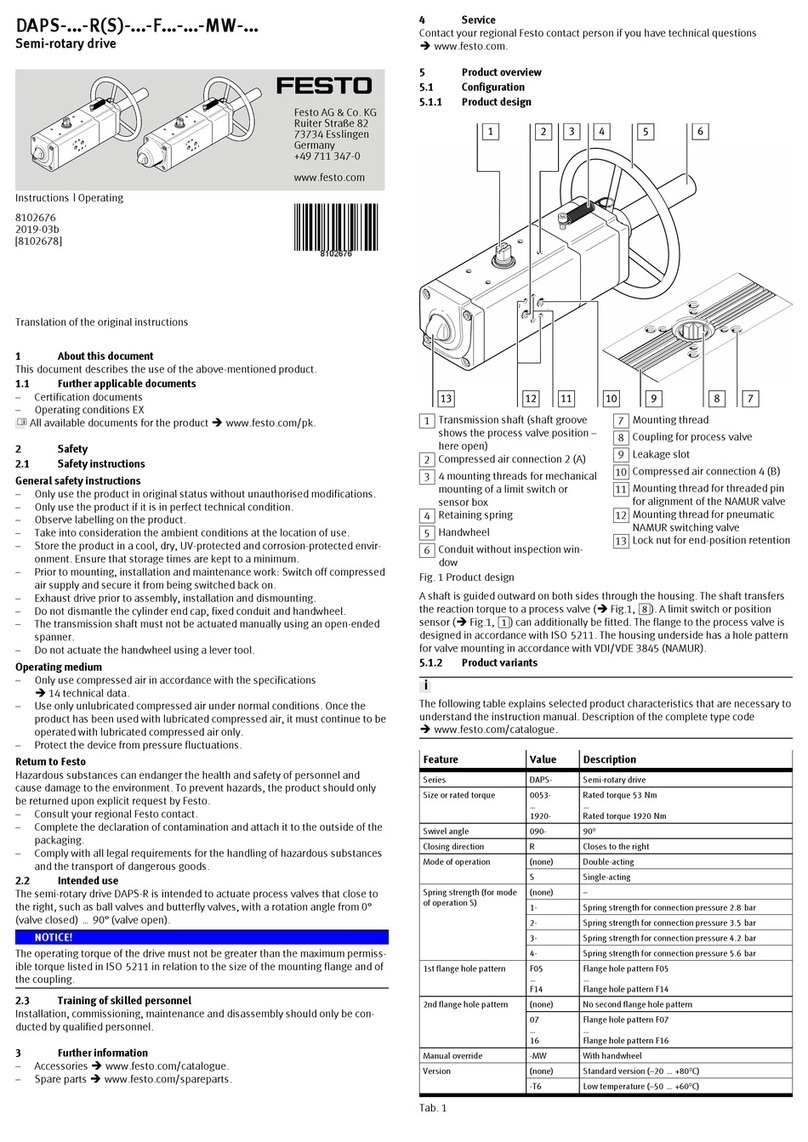
Festo
Festo DAPS-...-R-...-F...-...-MW Series operating instructions
ZIEHL-ABEGG
ZIEHL-ABEGG Icontrol FXDM operating instructions
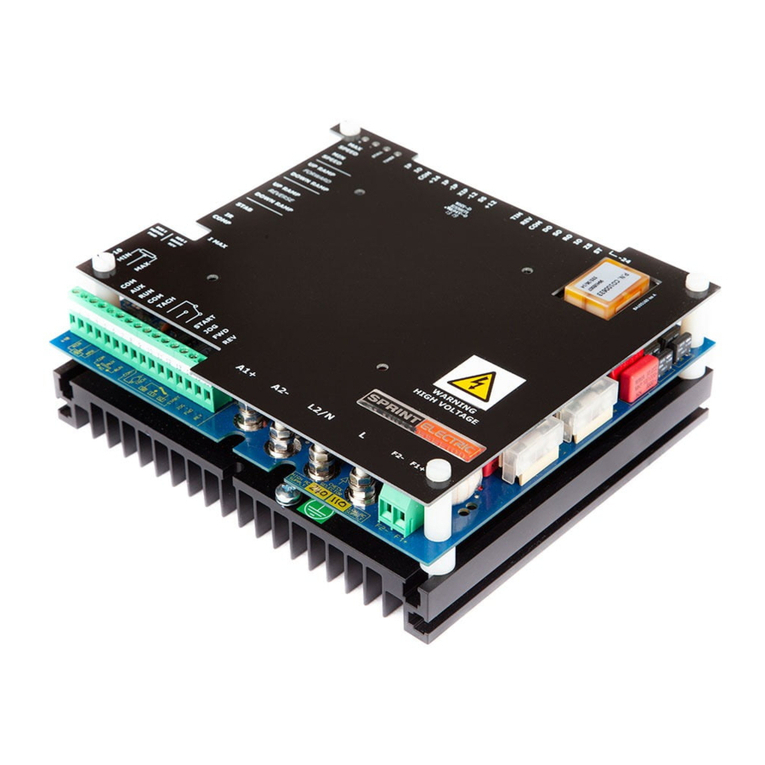
Sprint Electric
Sprint Electric 4Q 3600XRi product manual
